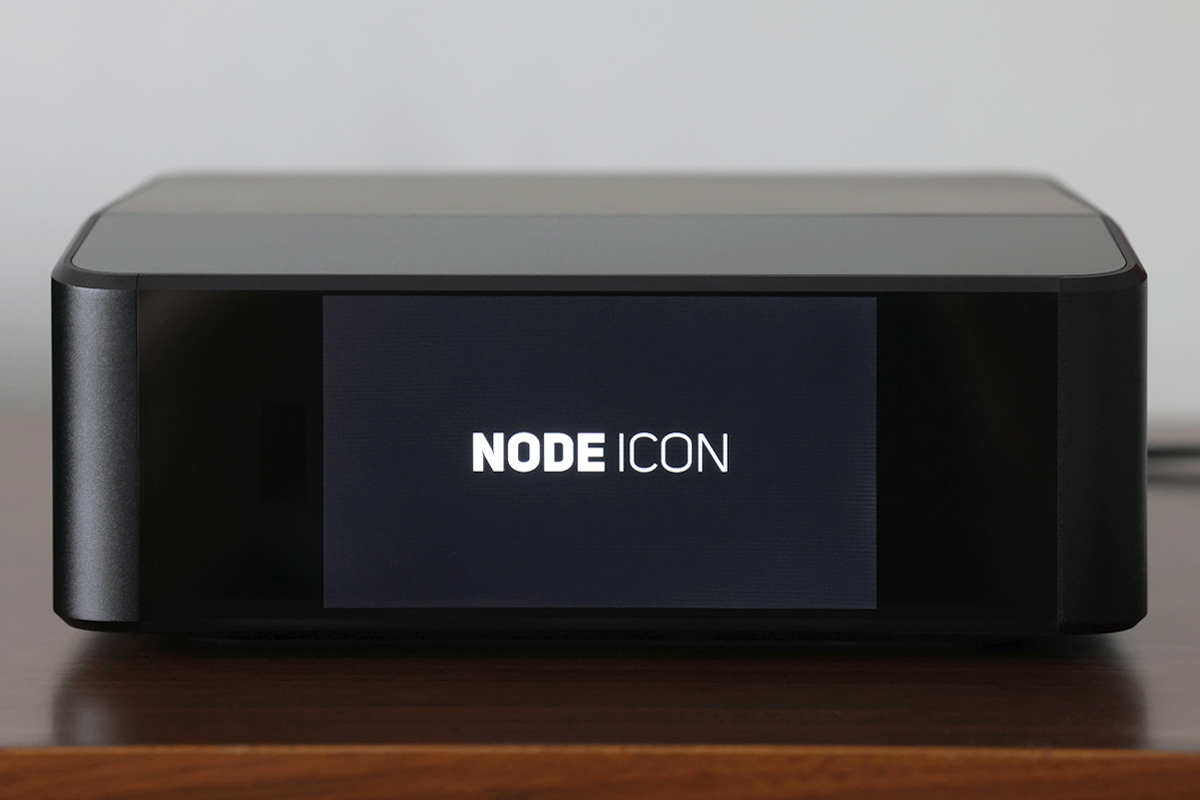Note: for the full suite of measurements from the SoundStage! Audio-Electronics Lab, click this link.
 In the past four years, SoundStage! Simplifi has featured reviews of four releases of the Bluesound Node streamer: the 2021 Node streaming DAC-preamplifier (reviewed by Gordon Brockhouse, October 2021), the 2023 Node X streaming DAC-preamplifier (reviewed by me in October 2023), the 2024 Node Nano streamer (reviewed by Todd Whitesel, September 2024), and the 2024 Node streaming preamplifier (reviewed by Gordon Brockhouse, February 2025). In December 2024, Bluesound added another model to its Node line that is a little different from the others: the Node Icon. In this version, the streamer is intended to be a reference component for a high-quality audio system; yet, by high-end standards, it is still priced reasonably at $1199 (all prices USD).
In the past four years, SoundStage! Simplifi has featured reviews of four releases of the Bluesound Node streamer: the 2021 Node streaming DAC-preamplifier (reviewed by Gordon Brockhouse, October 2021), the 2023 Node X streaming DAC-preamplifier (reviewed by me in October 2023), the 2024 Node Nano streamer (reviewed by Todd Whitesel, September 2024), and the 2024 Node streaming preamplifier (reviewed by Gordon Brockhouse, February 2025). In December 2024, Bluesound added another model to its Node line that is a little different from the others: the Node Icon. In this version, the streamer is intended to be a reference component for a high-quality audio system; yet, by high-end standards, it is still priced reasonably at $1199 (all prices USD).
The 2023 Node X (discontinued, $759 when available) was an upgraded version of the 2021 Node ($549), and in retrospect it seems to have served as a stopgap until the 2024 Node releases. In addition to upgraded circuitry and support for Dirac Live room correction, the Icon features a color display and improved aesthetics. This brings it more in line with competing products in this price range, and some that cost quite a bit more.
No-compromise versatility
The Bluesound Node has been remarkably successful over the past ten years or so, firmly entrenching itself in the entry-level streamer market segment. The Icon transcends that level, costing considerably more than the previous top Node model, the Node X. It has a smaller footprint than previous Node models and is taller, resembling NAD’s Masters M10 and C 700 BluOS streaming amplifiers. With its full-color display and support for Dirac Live room correction, the Node Icon could be a serious candidate for the centerpiece of a high-quality streaming audio system.
Like earlier Node versions, the Icon’s output can be set to fixed or variable, allowing it to serve as a preamplifier. A variable-crossover subwoofer output is also available. It can also act as a server for other BluOS components in a multiroom system. The Dirac Live room correction in the Icon’s implementation takes place before D-to-A conversion and therefore remains usable when the Icon functions as a digital streamer.

While many streaming systems provide a controller app for various mobile devices, the Icon’s excellent BluOS controller app is available for macOS and Windows in addition to iOS and Android, so you aren’t limited to controlling it with a smartphone or tablet.
DAC and compatibility
The audio circuitry of the Node Icon is the most advanced of all the Node models. The DAC architecture is a dual-mono design based on two ESS Technology two-channel ES9039Q2M DAC chips. The DAC circuitry incorporates MQA Labs’ Qrono d2A technology, which “applies filters and noise shapers to improve impulse response and transparency in digital-to-analog conversion,” according to an MQA white paper. For maximum effectiveness, filters are optimized for the different sampling rates supported by the DAC chip.
As with other BluOS-capable devices, the Node Icon supports a maximum bit depth of 24 bits and a sampling frequency of up to 192kHz. It supports many stereo audio formats: FLAC, MQA, ALAC, WAV, AIFF, MPEG-4 SLS, MP3, AAC, WMA, WMA-L, Ogg, and Opus. It also supports real-time DSD conversion and playback up to DSD256 for files indexed in the local library or located on connected USB drives. Previously, DSD files first had to be converted to PCM in the BluOS app. An ARM Cortex-A53 quad-core processor powers the DSP functions. The Node Icon is Roon Ready and supports AirPlay 2, Spotify Connect, and Tidal Connect. It is also compatible with control system integration from Crestron, Control4, RTI, ELAN, URC, Lutron, and Amazon Alexa Skills voice control.
Case and connections
The gloss-black 4.9-pound Node Icon has a more squarish form factor than the other Node models, measuring 8.7″ in width and 7.6″ in depth. It is also taller at 3.3″, which allows for a 5″ display. Like the other Node models, the Icon features a top-mounted touch panel that can be set to remain activated or to illuminate and activate through proximity sensing. On the back panel are a TosLink digital input and a pair of coaxial RCA analog inputs, coaxial (RCA) and optical (TosLink) S/PDIF outputs, and an RCA subwoofer output, as mentioned. An RJ45 port is provided for gigabit ethernet. Wireless connectivity includes dual-band Wi-Fi 5 and two-way Bluetooth 5.2, with support for the aptX Adaptive codec. Stereo outputs are provided on both single-ended RCAs and balanced XLRs and can be set as either fixed, for connection to a preamplifier, or variable, for direct connection to a power amplifier.
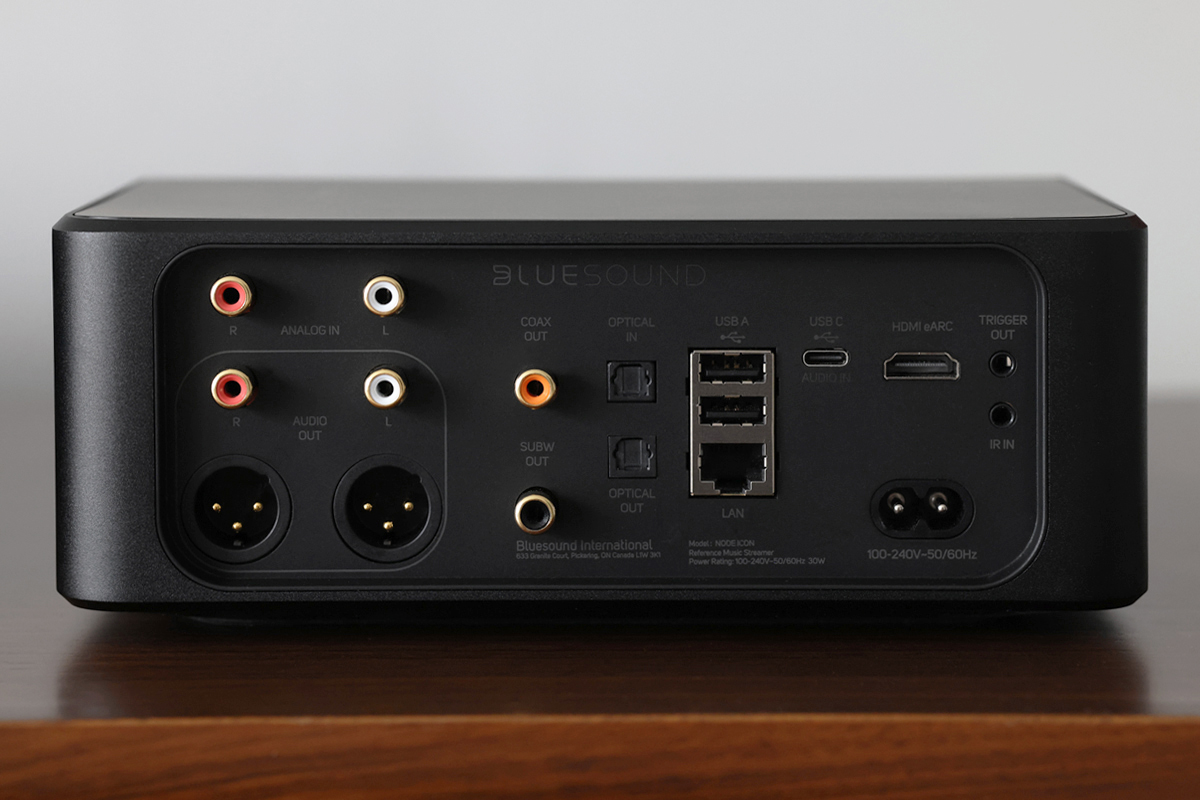
Additional inputs include HDMI eARC, for connecting to compatible television outputs, USB-A, for external storage devices, and USB-C, for PC connection. An IR input and a 12V trigger output are also provided. For headphone enthusiasts, a THX AAA (Achromatic Audio Amplifier) headphone output on a 0.25″ jack is available on each side of the unit. Dirac Live functionality is disabled when using a headphone output. The AC power inlet is the same C14 mini bi-pin connector found on other Nodes, and a power cord is supplied.
Control and room-correction software
Configuring a network streamer might seem daunting to some, especially those who don’t have much experience with networked devices, but the process is quite simple. When booting up for the first time, two QR codes appear on the display: one directs you to Google Play, the other to Apple’s App Store, where you can download the BluOS controller app. After first deleting a previous installation of the app from my smartphone, I scanned the code, downloaded the Android app, and connected the Icon to my home network’s ethernet hub. The app recognized the Icon, and I linked to it. I then entered my Tidal credentials and was listening to music moments later. I also downloaded and installed the Windows version of the app on my Mini PC, as that is my preferred method for controlling devices in my system. In addition to using the BluOS controller app, I also used Roon and Tidal Connect to stream to the Icon. All apps worked flawlessly with the Icon.
Although the Node Icon is Dirac Live Ready, meaning it is fully compatible with Dirac Live technology, you still need to purchase a license to use this room-correction software. Dirac Live is available in two versions: a limited-bandwidth version ($159), which corrects frequencies from 20Hz to 500Hz, and a full-bandwidth version ($249), which extends the range up to 20kHz. Users can upgrade from the limited- to the full-bandwidth version for $99. Room correction relies on precise measurements of the acoustics in the listening room taken by a sensitive omnidirectional microphone. If you don’t already have one, Bluesound offers a room-calibration kit for $49 that includes a microphone and USB adapter. For the purpose of this review, Bluesound provided me with a license for the full-bandwidth version of Dirac Live as well as the calibration kit.
![]()
I ran the Dirac Live application on my Mini PC using the generic microphone calibration and target-curve files that I downloaded from Bluesound’s website. The calibration process and application of the correction filter were quite painless. The crossover to a single JL Audio E-Sub e112 powered subwoofer was set to 60Hz in the BluOS app. It should be noted that upgraded firmware has recently been released that makes the Node X and Node (2021) Dirac Live Ready. Similar upgrades for two Bluesound streaming integrated amplifiers—the 2021 PowerNode (reviewed by Gordon Brockhouse in 2021) and PowerNode Edge (reviewed by Todd Whitesel in 2023)—are forthcoming. I can’t commend Bluesound highly enough for providing this firmware upgrade to owners of previous Node and PowerNode models.
The Bluesound app allows control over the Node Icon’s many features, some of which I never used. This feature set includes functions for configuring the display and touch panel, input and output, timers, alarms, and presets, among many others. Few, if any, other streaming preamplifiers at the Node Icon’s price point can match its extensive set of features.
Setup and listening impressions
I connected the Node Icon to my Lyngdorf Audio MXA-8400 power amplifier and MartinLogan Masterpiece ESL 9 hybrid electrostatic loudspeakers using Shunyata Research Venom-X XLR interconnects and speaker cables. I used a Clarus Aqua power cable with the amplifier. Control devices were a Samsung Galaxy S21 smartphone and a Beelink Mini PC running Windows 11, Roon, and Tidal. I augmented the system with the JL Audio E-Sub e112 powered subwoofer to assess how effectively the Icon integrates a subwoofer and implements room correction in a full-range setup.
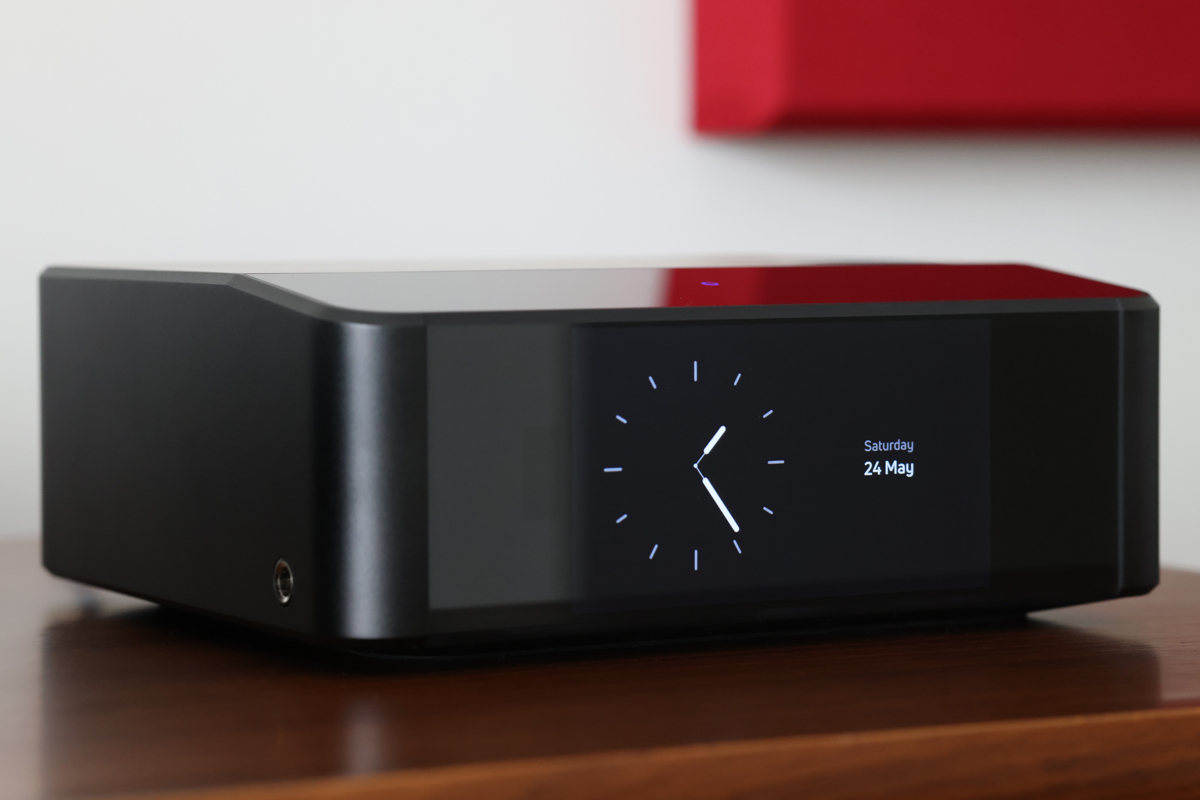
Even without the aid of Dirac Live room correction, the Node Icon performed very well in my system. A remastered version of Elvis Presley’s 24 Karat Hits! (DSD64 DSF, Analogue Productions RCA Victor) sounded fantastic. The excellent delineation and balance of elements in Presley’s melodious songs, including his voice as it transitioned between baritone and tenor registers in his distinctive style, were clearly demonstrated in “Can’t Help Falling in Love” and “In the Ghetto”. The sparse arrangement of the jumping “Jailhouse Rock” was particularly striking, with the drums and electric guitar providing wide dynamics. The vocals in “Love Me Tender” were projected into the room with a startling presence.
As a conventional DAC-preamp, the Node Icon was great; with the JL Audio E-Sub e112 subwoofer and Dirac Live room correction, it was extraordinary. The backing vocals on “In the Ghetto” absolutely popped but never crowded the King, and, along with the orchestra, were spread wide apart. The speakers seemed to vanish from the room, leaving an expansive wall of sound in their place. The bass was tighter, and a slight smearing in the midrange that had previously been present was now cleared up, making the orchestra’s strings and horns sound more forceful and realistic. The multiple drum fills were infused with authentic snap and speed.
It’s been 14 years since Alison Krauss released an album with her bluegrass-country band, Union Station. In March of this year the group released Arcadia (24-bit/44.1kHz FLAC, Down the Road / Tidal), picking up right where they left off and sounding better than ever. Every song on this superbly produced album was recorded meticulously. Krauss’s voice was as mesmerizing as always, and her acoustic accompaniment was exquisite.

The album opens with the brooding “Looks Like the End of the Road,” where a deep acoustic bass imbues the track with an air of melancholy. Jerry Douglas’s sharp, twangy dobro solos sliced through the darkness like a fleeting, shining beacon. Krauss’s singing was crisp and forward without sounding etched. Russell Moore’s voice on “The Hangman” was softer and more relaxed. Both had strong presence and great clarity. “Looks like the End of the Road” reminded me of the wonderfully recorded and equally dark “It Doesn’t Matter” from the group’s 1997 album So Long So Wrong (16/44.1 FLAC, Rounder Records / Tidal). At the 2:08 mark of this track, the electric bass kicks in. Lulled by the sedate, somber guitar and melodic vocals that precede it, I was startled by its force. I love Krauss and Union Station’s wistful take on bluegrass. It is always such a joy to listen to, and with the Node Icon, I enjoyed it even more—every note.
Impressed by the Icon’s powerful bass and rock-steady imaging of Alison Krauss and Union Station’s mostly acoustic albums, I upped the challenge and cued up a spectacular 1958 recording of Béla Bartók’s Concerto for Orchestra by the Chicago Symphony Orchestra under Fritz Reiner (DSD64 DSF, Analogue Productions / RCA Victor). The solemnly pulsating strings of the opening movement emerged weightily on an expansive soundstage, filling my listening room with a velvety texture. Against this backdrop, the wind instruments were depicted in well-defined images with contrasting sharp tones. The lone snare that opens the second movement was faithfully imaged far back in the orchestra, its quick, gentle taps slowly drifting off into the background. The Icon kept up valiantly with the frenetic tempo of the Finale, presenting the dueling horns and strings distinctly in the spacious soundstage and with great gusto in this exceptional recording.
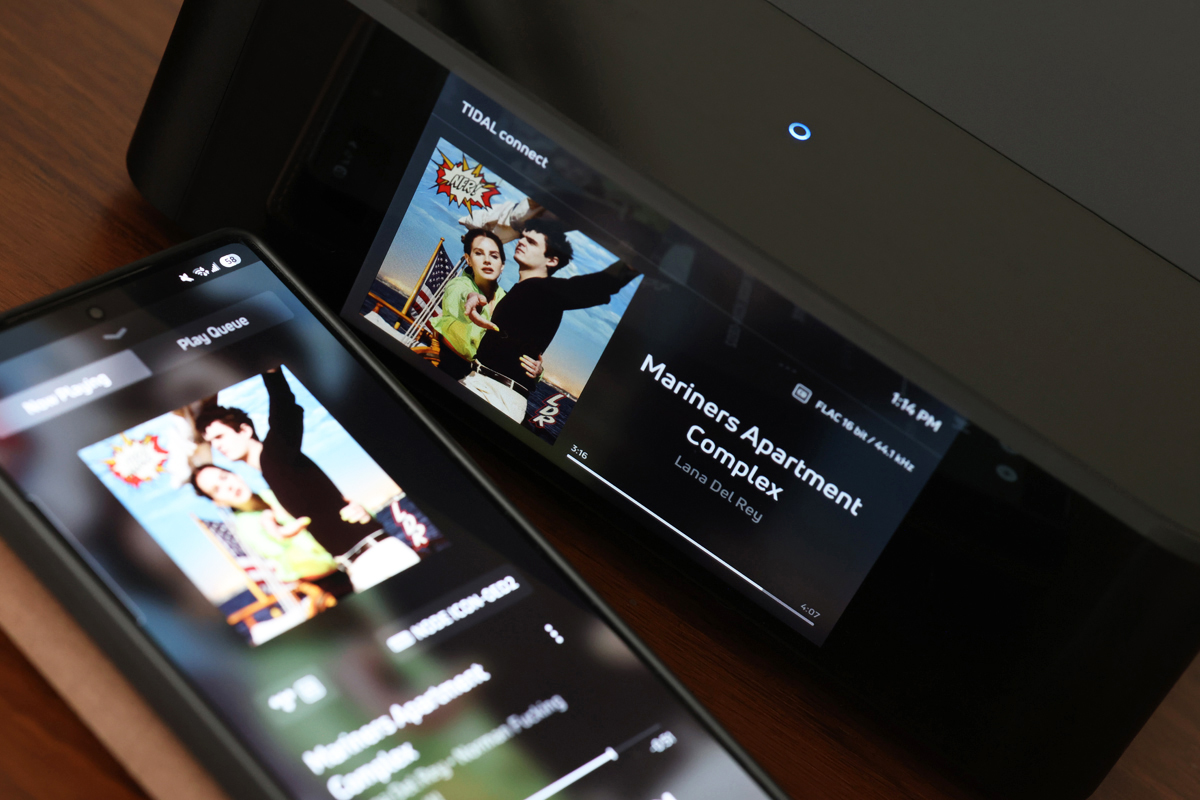
On Lana Del Rey’s “Mariners Apartment Complex,” from her 2019 album Norman Fucking Rockwell! (16/44.1 FLAC, Polydor Records / Tidal), subtle shifts in Del Rey’s tone of voice as she progresses from verse to chorus were readily apparent with the Icon, despite the multiple overdubs. The breathiness of her vocals in “Hope Is a Dangerous Thing for a Woman like Me to Have – but I Have It” was arresting. I could hear the sound of her lips and phonetic aspiration on this ultra-close-miked track.
Plugging in my HiFiMan HE400se headphones demonstrated the revealing nature of the THX AAA headphone circuitry, allowing me to hear all of this fine detail and more. Del Rey’s sonic image, directly in front of me, wrapped slightly around my head, her soft sibilance fully enveloping me. The effect was eerie and created an intensely intimate presentation. The Node Icon’s THX AAA output has now become my reference component for built-in headphone amplifiers, just as the one in the Node X was previously.
Comparison
Comparing the Cambridge Audio EXN100 streamer ($1799), which I reviewed in March, with the Node Icon without engaging bass management or Dirac Live, features the EXN100 lacks, resulted in essentially a dead heat. Both sounded clean and generated realistic images within a large soundstage. At times, the Cambridge was slightly smoother and richer, but the differences were minor and with certain tracks difficult to discern. On Arcadia, for example, the Cambridge was a tad richer harmonically, giving the strings of the steely guitars and mandolin plenty of twang, and the deep bass notes had a more satisfying sustain. On Emmylou Harris’s Wrecking Ball (24/44.1 FLAC, Nonesuch Records / Tidal), however, I could not always differentiate between the two streamers. The production quality of many tracks on this album is less than perfect, and the slight haziness in those recordings may have masked differences I would have otherwise noticed.
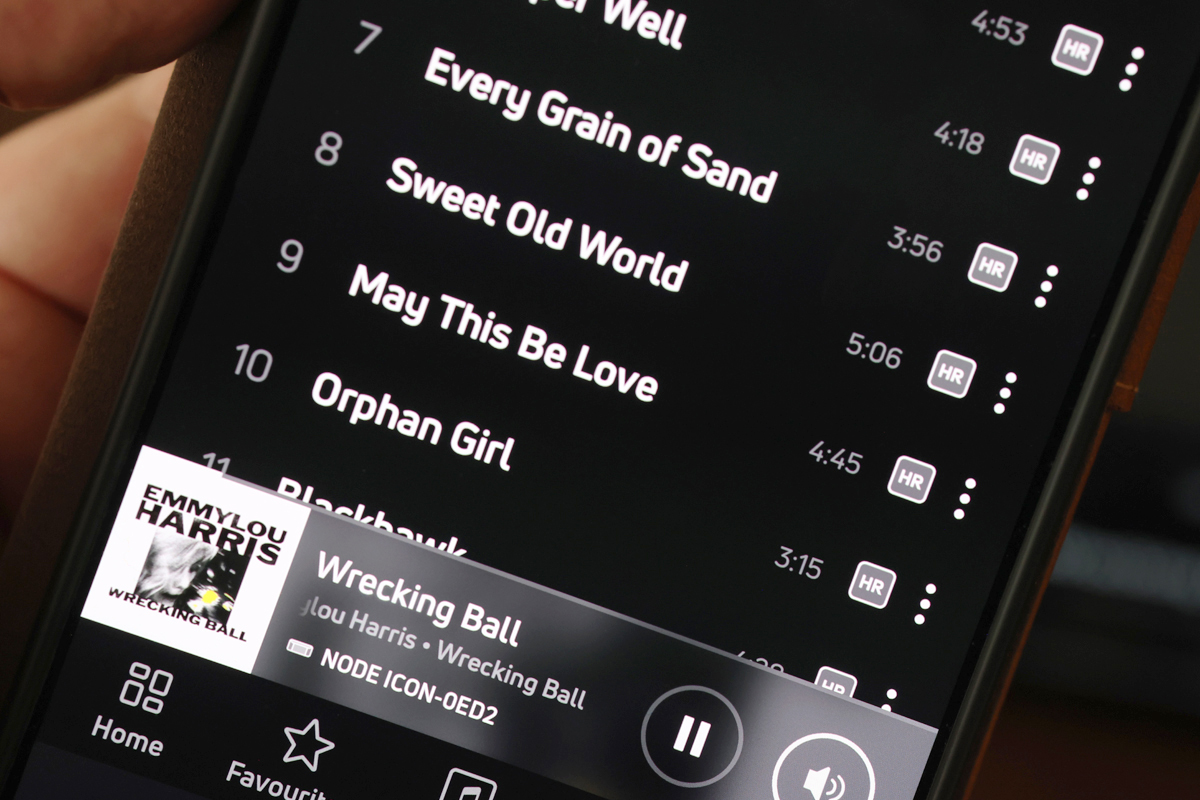
When I added the JL Audio e-112 subwoofer to the ML ESL 9 loudspeakers and engaged Dirac Live room correction and bass management, the Node Icon pulled everything together through the transparent MXA-8400 amp to dazzling effect. It was a thoroughly satisfying listening experience. The Human League’s “Human” from the band’s 1986 album Crash (DSD64 DSF, Virgin) was tightly controlled and exceptionally clear, from the big sweeping opening bars to the spoken monologues between Philip Oakey and Joanne Catherall.
It’s been many months since my review of the Eversolo DMP-A8 streaming preamplifier ($1980), which impressed me with its incredible build quality and fantastic performance. The Eversolo’s support for finite-impulse-response (FIR) filters improved its performance—particularly in the low frequencies, to a lesser degree in the midrange—but the effect in my system was not as pronounced and beneficial as that of Dirac Live with the Node Icon. The DMP-A8’s low- and high-pass filters do not provide effective bass management; it cannot therefore integrate a subwoofer into a system as well as the bass-managed Icon can. At $1199, the Icon provides an unbeatable combination of sound quality and practical features.
Conclusion
If you’re looking for a basic streamer to provide a digital signal to a DAC or the digital input of an integrated amplifier or processor, the standard Node, or even the Node Nano, or one of the many excellent, inexpensive streamers from other manufacturers, such as the Cambridge Audio MXN100, will likely meet your needs. If, however, you want your streamer to also serve as a preamplifier, especially if you plan to add a subwoofer and utilize room correction, the Node Icon offers exceptional value and is my number-one recommendation.
. . . Roger Kanno
Note: for the full suite of measurements from the SoundStage! Audio-Electronics Lab, click this link.
Associated Equipment
- Speakers: MartinLogan Masterpiece Classic ESL 9
- Subwoofer: JL Audio E-Sub e112
- Streaming preamplifier: Cambridge Audio EXN100
- Preamplifier: Anthem STR
- Power amplifier: Lyngdorf Audio MXA-8400
- Digital sources: Beelink Mini PC running Windows 11, Roon, and Tidal; Samsung Galaxy S21 smartphone
- Headphones: HiFiMan HE400se
- Speaker cables: Shunyata Research Venom-X, Analysis Plus Chocolate Oval 12/2
- XLR interconnects: Shunyata Research Venom-X
- Power cords: Clarus Cable Aqua, Essential Sound Products MusicCord-Pro ES
- Power conditioners: Blue Circle Audio PLC Thingee FX-2 with X0e low-frequency filter module, Zero Surge 1MOD15WI
Bluesound Node Icon streaming preamplifier
Price: $1199
Warranty: One year, parts and labor
Bluesound
633 Granite Court
Pickering, Ontario L1W 3K1
Canada
Phone: 1-855-531-4666
Fax: (905) 831-6936
E-mail:
Website: www.bluesound.com





